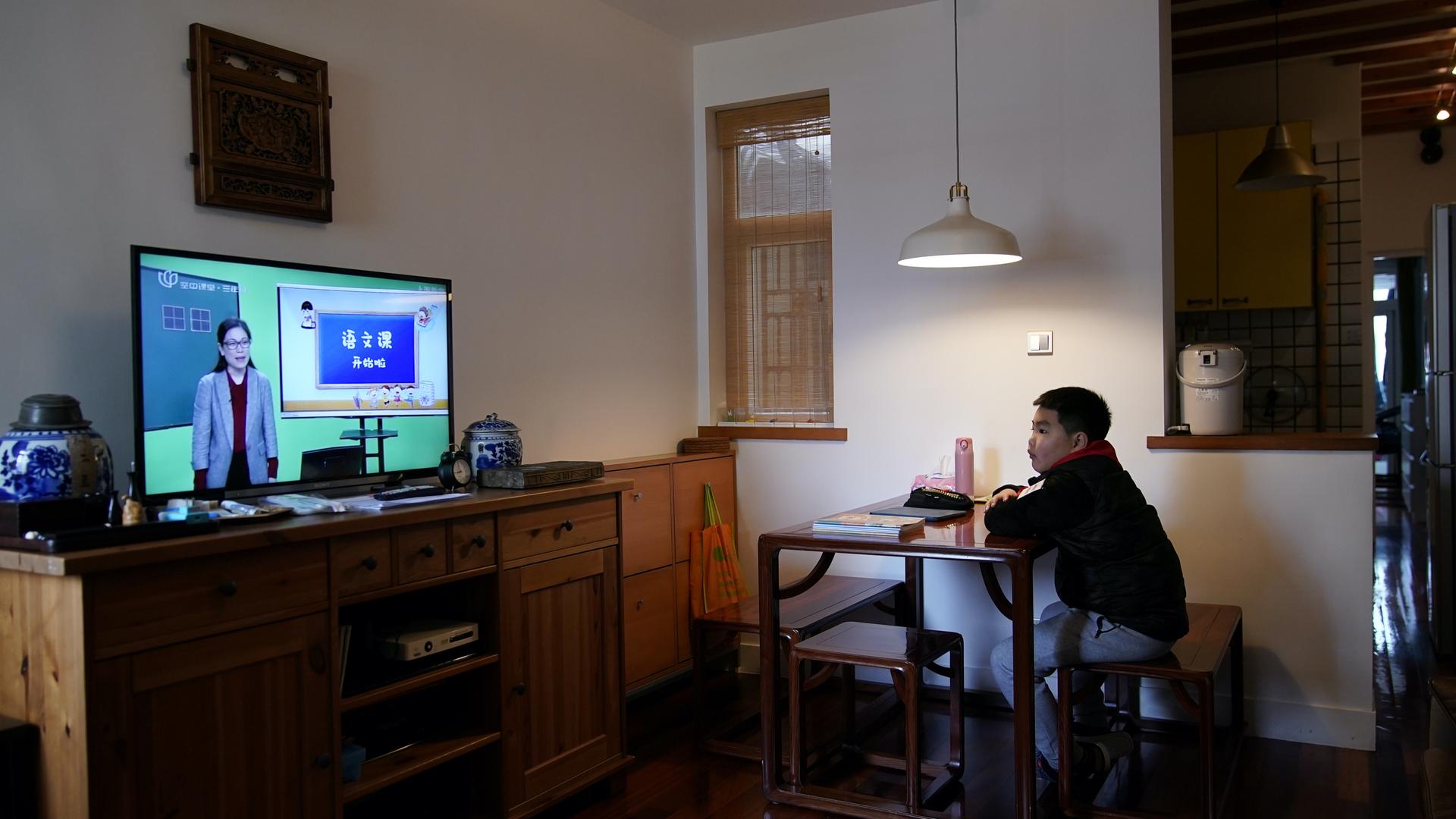Children worldwide are adjusting to go back to school, whether in person or online. But for families still stuck away from home because of coronavirus pandemic travel bans, going back to school has taken on new levels of difficulty.
For students who normally live in Shanghai, China, going back to school with remote learning from half a world away in the United States has its downs — and a few ups.
As China’s schools reopen this fall and students head back to the classroom, it’s especially odd for those still stuck in the US to be the only ones still learning remotely.
Related: Pandemic-prompted remote education efforts get a failing grade
Every night, Titi Baccam and her three daughters rush through dinner, as the girls get ready to start their classes — because they attend a school in Shanghai, but have been stuck in Iowa since February.
“In the evenings, instead of winding down and relaxing and contemplating the day, we are up and awake and alert and … this is the time we have to be most focused.”
“In the evenings, instead of winding down and relaxing and contemplating the day, we are up and awake and alert and … this is the time we have to be most focused,” says Baccam.
When COVID-19 shut down schools across China, Baccam brought her kids to her home near Des Moines, thinking it would be better for them there. Now, seven months later, they’re still stuck there due to visa delays and difficulties with flight bookings.
Related: Pandemic learning in Mexico requires thinking outside the screen
School in Shanghai started Sept. 1, and that means new schedules for everyone.
For 9-year-old Vivienne, the youngest in the family, the adjustment has been extreme. She starts school at 7:30 p.m. and gets to bed after 1 a.m. most nights. She says she’s gotten used to it, but staying up past her bedtime makes her hungry. She eats three dinners a night.
“I get tired, so I probably don’t remember stuff as well,” she adds.
In the spring, all of Vivienne’s classmates in Shanghai were doing online schooling, too. But now she’s the only one. The teachers just put a phone in the front row so Vivienne can watch the lessons. Vivian’s mom says it’s a poor substitute for being inside the classroom.
Related: Virtual schooling poses extra challenges for English-language learners
“The teacher is so focused on presenting the lesson that it’s hard for them to pay attention if Vivienne has a problem or she needs something because she’s just a little phone on a desk,” she says with a laugh.
Vivienne’s 15-year-old sister Maya is a morning person and is struggling with the late-night math class. “But it’s math, so I was, like, OK, you have to stay awake. And I did. I fell asleep, like, 10 minutes after that. … I just closed my computer on the table — bed,” she says.
Maya’s obviously doing her best to keep up. Still, the schedule seems to change every day.
“It’s like when you’re going down a waterslide. But … you can’t see the end. You know, like, the twisty ones, where you can’t see past the corner,” she says. “We’re learning metaphors,” she adds.
Maya’s classmate Annabelle Ye started school this fall from rural North Carolina. She and her family were stuck there for more than half a year. They just got back to Shanghai last week.
Annabelle says one of the hardest parts about starting the school year remotely was knowing all her friends were back together in China. On the very first day of school, she had watched her high school’s assembly on a livestream while still in North Carolina.
“That’s a really strange feeling. … I feel like distance learning and mental health, it’s like, a fragile connection.”
“That’s a really strange feeling,” she says. “I feel like distance learning and mental health, it’s like, a fragile connection.”
Annabelle’s younger brother Micah just started seventh grade at a new school based in Shanghai. He says those first-day jitters were magnified online.
“Starting at a new school when it’s overseas was kind of strange. All of the people there knew each other beforehand because they’d all been there for like, six grade or so. So, when I got there it was like, everyone knew each other, and I was, like, the only person who was new there.”
“Starting at a new school when it’s overseas, was kind of strange. All of the people there knew each other beforehand because they’d all been there for like, six grade or so. So, when I got there it was like, everyone knew each other, and I was, like, the only person who was new there,” he says.
But he saw some benefits to being so far from his school. “Like, PE classes, instead of just doing normal classes, I can go hiking. The closest thing you can hike in Shanghai is a skyscraper.”
Children doing online schooling all over the world are learning an important lesson in resilience.
Annabelle and Micah will go through a new transition next week as they attend school in person for the first time this year.
Meanwhile, Baccam and her kids are still trying to get visas and flights back to China. Baccam says she keeps telling herself and her kids that this experience will make a great college admissions essay in a few years.
